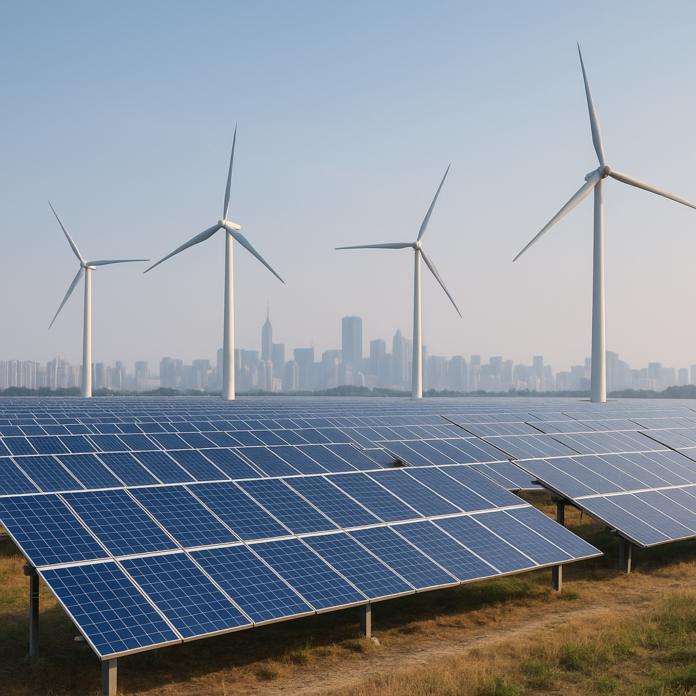
China announced a fresh set of climate measures on Wednesday, pledging to bring down greenhouse gas emissions by 7–10% from peak levels by 2035 and expand renewable energy use at a major international summit.
Speaking to the United Nations’ climate leaders’ gathering by video link from Beijing, President Xi Jinping said the country would scale up its solar and wind power generation capacity sixfold compared to 2020 levels over the coming decade. If achieved, non-fossil sources would account for more than 30% of China’s overall energy use.
The commitment marks a shift for the world’s largest current emitter, which until now had focused primarily on slowing the growth of emissions rather than cutting them outright. Still, many climate researchers and advocacy groups had expected Beijing to commit to deeper cuts, especially given its expanding role in producing electric vehicles, batteries, and renewable technology.
Xi also appeared to take aim at U.S. President Donald Trump’s speech to the UN General Assembly the day before, in which Trump dismissed climate science and renewed his withdrawal from the Paris Agreement. “Green and low-carbon transformation is the trend of our times,” Xi said, adding that while some countries resist the change, the global community should not waver.
Reactions from other nations underscored the contrast. Brazil’s President Luiz Inacio Lula da Silva pledged emissions reductions of 59–67% by 2035 and warned that political leaders risk losing credibility if promises are not met with real action. Australia’s Prime Minister Anthony Albanese committed to lowering emissions by 62–70% from 2005 levels by 2035, saying his government aims to show climate ambition without harming jobs or security.
Palau, speaking on behalf of the Alliance of Small Island States, unveiled a 44% cut from 2015 levels by 2035 and reminded wealthier nations of their legal duty to do more. The European Union, while still finalizing its official target, signaled it would aim for a reduction in the range of 66–72% by 2035.
UN Secretary-General Antonio Guterres, who hosted the event, said that while the Paris Agreement of 2015 has lowered the trajectory of global warming, progress remains insufficient. He noted that average temperatures are on track to rise about 2.6°C compared with preindustrial levels, still well above the treaty’s 1.5°C goal. “We need new strategies for 2035 that move further and faster,” Guterres said.
Analysts argued that Trump’s rejection of climate agreements could leave space for China to consolidate its role in renewable energy markets. Others, however, viewed China’s new target as cautious, pointing out that its rapid growth in green industries suggests capacity for deeper cuts.
With the COP30 summit in Brazil approaching later this year, many observers expect climate policy to remain a key test of global leadership.
This image is the property of The New Dispatch LLC and is not licenseable for external use without explicit written permission.